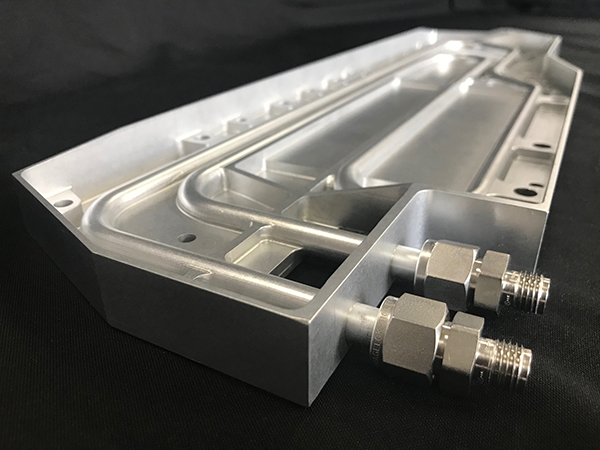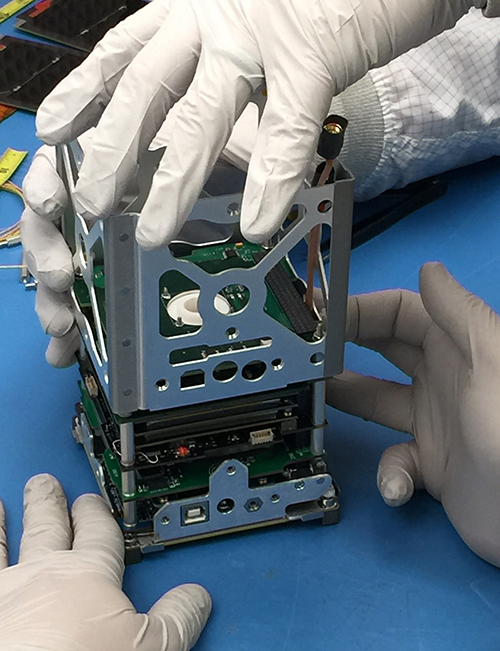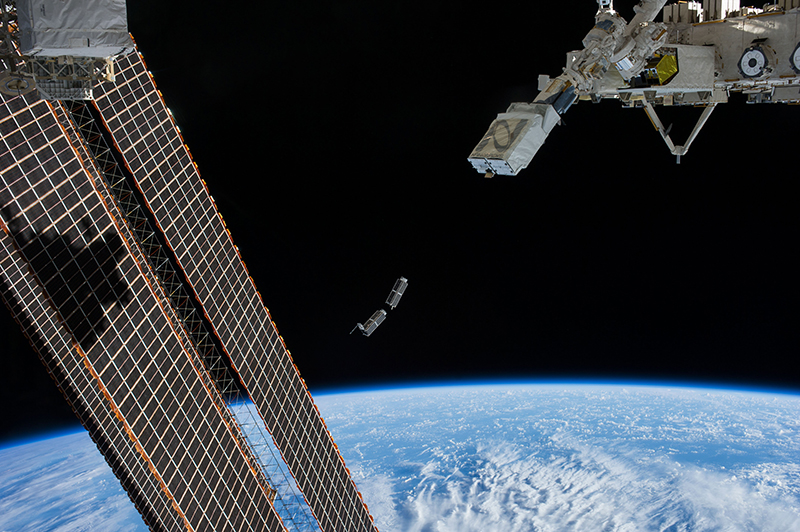NASA has a long history of supporting U.S. entrepreneurs, helping them turn their innovations from ideas into commercial products. Hundreds of small businesses have leveraged the agency’s Small Business Innovation Research (SBIR) program to create technologies that have applications for NASA spacecraft but can also benefit life on Earth by supporting a wide range of industries. Recently, NASA Spinoff revealed how years of collaborative SBIR efforts with metal 3D printing startup Fabrisonic helped mature its proprietary Ultrasonic Additive Manufacturing (UAM) process for commercial applications and space missions. This solid-state hybrid additive technology for improving spacecraft components has turned into a commercial success in industries like aeronautics and oil drilling.
After several thriving SBIR phase I and II awards, Fabrisonic not only helped create parts for spacecraft but developed a small UAM printer prototype for use on the space station. Today this miniaturized technology is being commercialized as the SonicLayer 1200 printer, which has generated $1 million in revenue, with one customer producing over 70,000 parts in-house. Commercial success has allowed the Ohio-based company to develop a diverse customer base and double in size, growing to 12 employees.
It all began in 2014, when Fabrisonic, as a subcontractor for Sheridan Solutions, started working with technologist Scott Roberts from NASA’s Jet Propulsion Laboratory (JPL) on a new heat exchanger design that would leverage UAM. This hybrid metal 3D printing technology uses high-frequency ultrasonic vibrations to scrub metal foils together, building up metal layer-by-layer to a net shape that is selectively machined. With some additional innovations, Roberts thought it could improve reliability for heat exchangers, crucial components in any spacecraft.
Space is one of the most extreme environments imaginable. Adding to the difficulties of operating structures in space, the temperature is a tough problem, where extremes can vary by hundreds of degrees. JPL explained that heat exchangers help maintain a steady temperature inside a spacecraft by removing excess heat or drawing in more. NASA’s research center often builds heat exchangers, like the ones used on the Mars Curiosity Rover, to circulate refrigerants through tubes. This helps protect electronics from dangerously cold situations, like when night temperatures on Mars drop to -140°F and to reject excess heat from radioisotope power sources during the day.

An aluminum heat exchanger Fabrisonic made for NASA’s Jet Propulsion Laboratory. Image courtesy of Fabrisonic.
Ranging from small (3 inches x 3 inches) to large (3 feet x 3 feet) structures, traditionally, these devices include a “long, snaking pipe” attached to a metal plate with brackets and epoxy. Although effective, they consist of dozens of interconnected small parts and joints that could fail during a long-term mission or under extreme conditions on Earth. However, Fabrisonic proposed the development of the entire device as a single piece.
To create the heat exchanger, a curved channel is carved into the layered metal and then enclosed under additional layers. Ultrasonic welding uses sound and friction to create a solid-state bond between layers of metal. The result is a solid-state atomic bond that welds layers of metal together. Even layers of different metals can be bonded into a single piece. JPL notes that relatively little heat is required because the bonding temperature for metals is significantly below their melting temperature.
Fabrisonic can quickly piece together layers as large as six feet square, making it possible to create a part with a complex geometry in a matter of days, rather than the months required by traditional fabrication practices. This shortens the development cycle for a spacecraft or speeds the manufacture of commercial parts.
Roberts believed his solution would solve “a class of problems for both NASA and industry.” And he was right. After several SBIRs, Fabrisonic’s advanced technology was leveraged to print heat exchanger devices, passing NASA’s stringent quality control tests in 2018 to surpass vibration, thermal, hermeticity, and burst requirements. The use of UAM enabled higher performance with both reduced weight and shorter lead times, with huge potential for use in interplanetary missions.
Through a multi-year endeavor, Fabrisonic has perfected its process. Additional SBIR funding provided by NASA’s Langley Research Center in Hampton, Virginia, paid for Fabrisonic to add layers of the radiation-resistant metal tantalum in the middle of aluminum spacecraft parts. Fabrisonic President Mark Norfolk explained UAM would not cause the different metals to liquefy and mix. The ability to meld layers of different metals also has advantages for customers in the oil and gas industry, who now rely on various Fabrisonic parts for drilling, Norfolk noted.
Other SBIR funding from Langley helped Fabrisonic, again as a Sheridan subcontractor, test the effectiveness of sensors built into the interior of aluminum parts with ultrasonic welding. Because the sensors are protected, they can function in harsh environments. In Tennessee, Oak Ridge National Laboratory, which conducts energy and nuclear research, successfully uses Fabrisonic’s embedded sensors in its facilities. In NASA aeronautics testing, these Fabrisonic sensors help detect weaknesses and performance issues in commercial airframes.
Although UAM has been successfully used for private and public endeavors, the costs associated with the large-scale Fabrisonic systems have been a barrier to entry for several companies and universities. To tackle this issue, Fabrisonic was awarded another set of SBIR phase I and II awards and worked with NASA’s Marshall Space Flight Center’s engineers to develop the small UAM printer, which would later become the commercialized SonicLayer 1200.
“Without SBIR and other government support, Fabrisonic may not have crossed the chasm between startup and commercial success,” said Norfolk. “It has enabled important research and developments. It makes critical information available, such as materials characterization data and case studies that help spread technology.”
Subscribe to Our Email Newsletter
Stay up-to-date on all the latest news from the 3D printing industry and receive information and offers from third party vendors.
You May Also Like
Gorilla Sports GE’s First 3D Printed Titanium Cast
How do you help a gorilla with a broken arm? Sounds like the start of a bad joke a zookeeper might tell, but it’s an actual dilemma recently faced by...
Nylon 3D Printed Parts Made More Functional with Coatings & Colors
Parts 3D printed from polyamide (PA, Nylon) 12 using powder bed fusion (PBF) are a mainstay in the additive manufacturing (AM) industry. While post-finishing processes have improved the porosity of...
$25M to Back Sintavia’s Largest Expansion of Metal 3D Printing Capacity Since 2019
Sintavia, the digital manufacturing company specializing in mission-critical parts for strategic sectors, announced a $25 million investment to increase its production capacity, the largest expansion to its operations since 2019....
Velo3D Initiates Public Offering in a Bid to Strengthen Financial Foundations and Drive Future Growth
Velo3D (NYSE: VLD) has been among a number of publicly traded 3D printing firms that have attempted to weather the current macroeconomic climate. After posting a challenging financial report for 2023,...


































